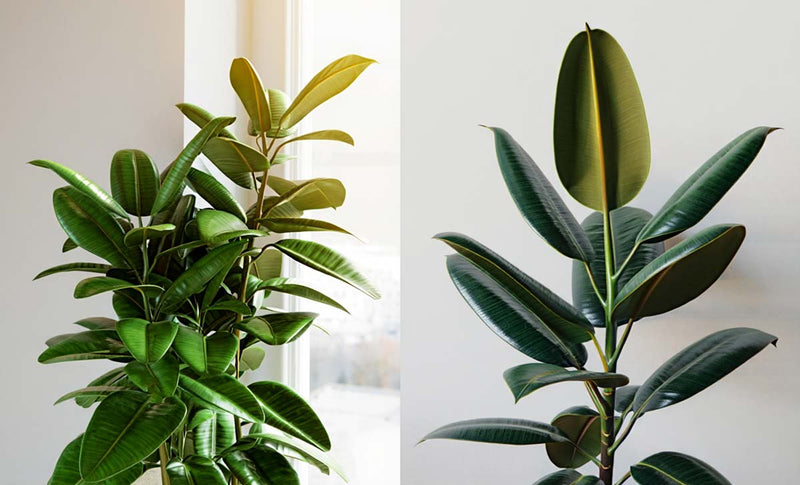Fixing Mistakes in Houseplant Pruning

Table of Content
Introduction
Pruning houseplants might seem like an intimidating task, but it’s a crucial part of ensuring your plants remain healthy and vibrant. Regular trimming promotes new growth, prevents diseases, and keeps your plants looking their best. It's akin to getting a haircut—snipping away the old to make room for the fresh. But, while most plant owners understand their plants need a little grooming now and then, not everyone knows how to prune properly. Often, simple mistakes can lead to brown foliage or stunted growth, which could make our green companions appear less lively.
Understanding the common pitfalls is the first step to mastering the art of houseplant pruning. Avoiding these blunders not only makes your plants thrive, but it also fosters a more rewarding plant care experience. Imagine noticing a boost in your plant's health shortly after implementing just a few tweaks in your pruning approach. In the following sections, some of the usual mistakes plant parents make when pruning are covered and explanations on how to sidestep them for healthier, more lush indoor greenery are provided.
Mistake #1: Pruning At The Wrong Time
Timing matters a lot when it comes to pruning houseplants. Each type of plant has its own growth rhythm, and understanding these natural cycles can save a lot of heartache. When you prune outside of these windows, you risk cutting off the season's freshest growth or shocking your plant at a vulnerable time.
To get it right, consider these simple tips:
- Most houseplants benefit from pruning in early spring. This is when they start their growth spurt, so any trimming encourages fuller growth.
- Avoid pruning during the late fall or winter, as most plants are in their dormancy period and won't bounce back quickly from cuts.
- Look for visual cues, like new buds forming or when older leaves start fading, as signs that it might be a good time to prune.
By matching your pruning schedule to the plant's growth patterns, you give them the best chance to flourish through their growing season. This practice not only leads to healthier plants but provides plant caregivers with the satisfaction of seeing their chosen plants thrive.
Mistake #2: Using the Wrong Tools
Having the right tools in your pruning kit can make a world of difference for your indoor plants. Using the wrong or dull tools can damage plant tissues, making them vulnerable to pests and diseases. Think of it like using kitchen scissors versus hairdressing shears for a haircut—the right choice results in a cleaner, healthier look.
Here are some must-have tools for plant pruning:
- Pruning shears: Ideal for thick stems and branches.
- Snips or scissors: Perfect for smaller and softer stems.
- Disinfectant: Essential for sterilizing tools before and after each use to prevent the spread of plant diseases.
- Protective gloves: Keep your hands safe from potentially prickly or irritating plants.
Once you have the right tools, it’s important to maintain them properly. Keep blades sharp and clean to ensure clean cuts. A quick sterilization using a mild bleach solution or alcohol can keep tools sanitized. And don't forget to store them in a dry place to prevent rust.

Mistake #3: Over-Pruning or Under-Pruning
Finding the pruning sweet spot can often feel like trying to strike the perfect balance. Over-pruning can strip a plant of its foliage, leading to stress and slower growth. On the other hand, under-pruning might leave you with a bushy plant that's constricted and unable to grow to its full potential.
To avoid these extremes, it's crucial to understand your plant’s specific pruning needs:
- Know your plant: Research the natural growth habits and pruning needs of each plant species in your home.
- Follow the one-third rule: Remove no more than one-third of the plant at any time during a pruning session.
- Watch for telltale signs: Symptoms like yellowing leaves can signal under-pruning, while stunted growth and bare stems may indicate over-pruning.
By adjusting your approach based on the plant type and listening to its signals, you can foster thriving indoor greenery.

Mistake #4: Incorrect Pruning Techniques
Pruning is more than just about cutting—it’s about cutting smartly. Incorrect pruning techniques can lead to dieback, open wounds, and unattractive growth patterns, taking away from the plant's natural beauty.
To prune correctly:
- Make clean cuts at a 45-degree angle, which promotes healing and growth.
- Remove only dead, damaged, or diseased sections first.
- Cut just above a leaf node or bud to encourage new growth.
- Observe the natural shape of the plant and aim to maintain it.
Visual cues such as the color and texture of the stem can help guide where to prune. By incorporating these techniques, you'll help your plants stay healthy and look their best.
Final Thoughts on Pruning Houseplants
Mastering proper pruning techniques allows you to maintain healthier, more vibrant plants. Every trim not only encourages growth but also ensures your houseplants remain free from pests and disease. With patience and practice, your indoor oasis will become more lush and fulfilling.
Remember, learning to listen to what your plants need is key to successful pruning. Your plants will reward you with fresh foliage and increased vitality. Check out the resources at the Houseplant Resource Center for personalized advice and more information on plant care.

Discover more about mastering the art of pruning houseplants by joining the conversation at the Houseplant Resource Center's lively discussion board. Whether you're a beginner or a seasoned plant parent, you'll find valuable insights and tips to keep your indoor garden thriving. Share your experiences, ask questions, and connect with fellow enthusiasts who are passionate about helping their plants flourish.
Want feedback on your pruning technique? Share before & after photos or ask questions in our House Plant Resource Center Facebook Group—your plants (and fellow plant parents) will thank you!








